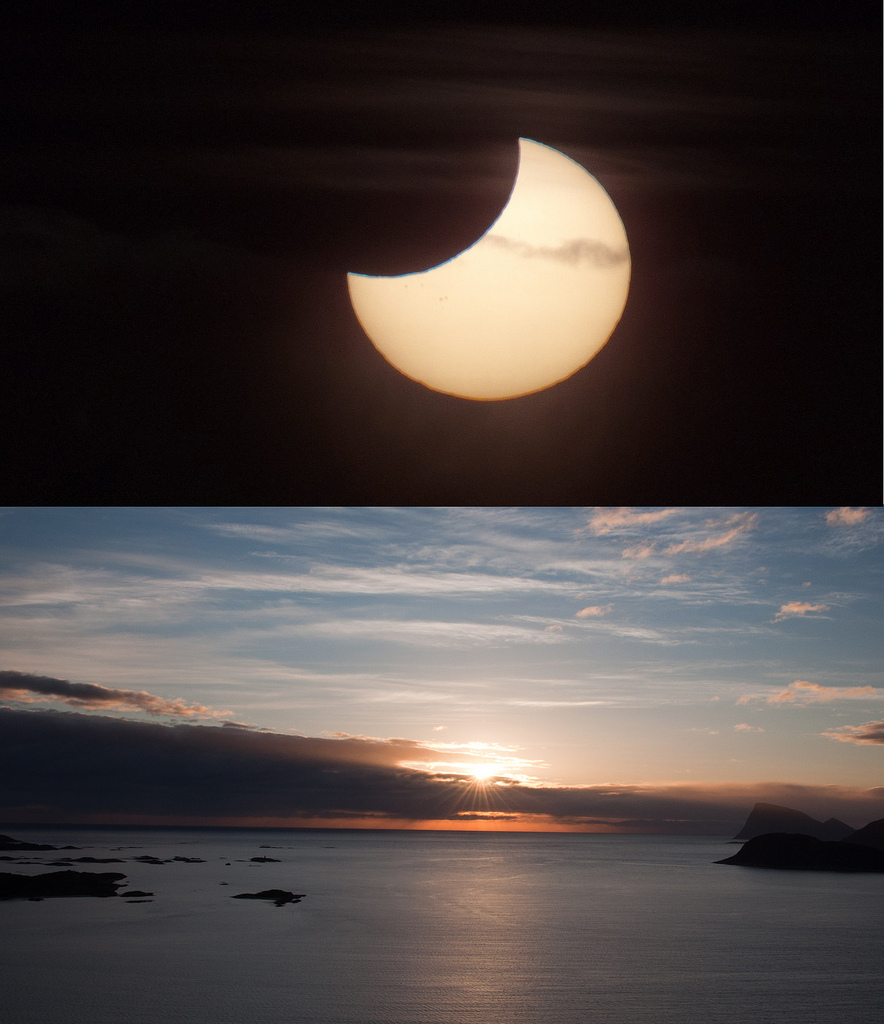Moon's Shadow Makes Waves in Earth's Atmosphere

Like a gigantic boat plying the heavens, the moon's shadow creates waves in Earth's atmosphere that travel at more than 200 mph, a new study reveals.
This effect was predicted back in the early 1970s, but researchers were only finally able to observe it during the total solar eclipse of July 22, 2009. The researchers discovered that acoustic waves, also known as sound waves, in Earth's upper atmosphere pile up along the leading and trailing edges of the moon's shadow as it moves across Earth, like the waves produced when a ship plows through water.
"We not only find the feature of the predicted bow wave but also the stern wave on the equator side of the eclipse path, as well as the stern wake right behind the moon’s shadow boat," researchers write in the study, which was published Sept. 14 in the journal Geophysical Research Letters. [Photos: "Midnight" Partial Solar Eclipse of 2011]
The researchers, led by J. Y. Liu of National Central University in Taiwan, used a network of ground-based GPS receivers to track the 2009 eclipse as it passed over Japan and Taiwan. They noticed that acoustic waves were being generated along the edges of the moon's shadow, in a part of Earth's upper atmosphere known as the ionosphere.
There was a 30-minute time difference between the arrival of the "bow" and "stern" waves. This figure suggests that if the moon's shadow were indeed a ship, it would be 1,064 miles (1,712 kilometers) long, researchers said.
The waves are produced by the temperature disparities created on Earth during a solar eclipse, which occurs when the moon's passage overhead blocks out the sun's light. The parts of Earth shaded by the moon naturally cool down, and this temperature difference spawns the acoustic waves, researchers said.
The waves move at about 224 mph (361 kph) — more slowly than the traveling temperature disparity that gives rise to them. That's why they pile up along the leading edge of the moon's path, researchers said.
Get the Space.com Newsletter
Breaking space news, the latest updates on rocket launches, skywatching events and more!
The next total solar eclipse— when the moon fully blocks the sun as seen from Earth — will take place on Nov. 13, 2012, though totality will only be visible from northern Australia and parts of the Pacific Ocean region.
The next partial eclipse of the sun will occur on Nov. 25, 2011, but it will only be visible from Antarctica, Tasmania, New Zealand and southern South Africa.
Follow SPACE.com for the latest in space science and exploration news on Twitter @Spacedotcom and on Facebook.
Join our Space Forums to keep talking space on the latest missions, night sky and more! And if you have a news tip, correction or comment, let us know at: community@space.com.

Space.com is the premier source of space exploration, innovation and astronomy news, chronicling (and celebrating) humanity's ongoing expansion across the final frontier. Originally founded in 1999, Space.com is, and always has been, the passion of writers and editors who are space fans and also trained journalists. Our current news team consists of Editor-in-Chief Tariq Malik; Editor Hanneke Weitering, Senior Space Writer Mike Wall; Senior Writer Meghan Bartels; Senior Writer Chelsea Gohd, Senior Writer Tereza Pultarova and Staff Writer Alexander Cox, focusing on e-commerce. Senior Producer Steve Spaleta oversees our space videos, with Diana Whitcroft as our Social Media Editor.